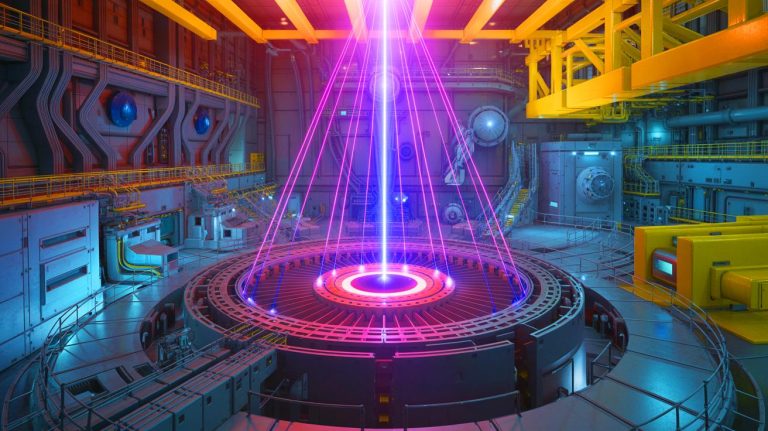| IN A NUTSHELL |
|
The National Ignition Facility (NIF) is breaking new ground in the quest for clean energy. With its recent experiments, NIF has reported a significant increase in energy output, marking a milestone in fusion energy research. Although the current output remains insufficient to power the electricity grid, these advancements signify a promising step toward achieving sustainable fusion energy. In this article, we will delve into the current progress, the methodologies employed, and the future of fusion energy as explored by NIF and other global research initiatives.
Progress Over Previous Milestones
The recent surge in energy production at NIF marks a pivotal development, building significantly upon its landmark success in 2022. At that time, scientists achieved a controlled fusion reaction that released more energy than the laser energy applied to the fuel target. This achievement was a first in controlled fusion experiments, yielding 3.15 megajoules from a 2.05 megajoule laser input.
Despite these remarkable increases in energy yield, the output remains insufficient for grid-scale power generation. The energy produced does not offset the total energy consumed by the NIF to conduct these experiments, which highlights the challenges still facing the field. Inertial confinement fusion, one of the primary methods being researched, is contrasted by magnetic confinement, which uses strong magnetic fields to contain plasma and induce fusion.
For over six decades, researchers at Lawrence Livermore National Laboratory (LLNL) and their global colleagues have pursued the challenging goal of fusion ignition. While the facility was not designed for continuous power output, these experiments continue to demonstrate the principles of controlled nuclear fusion.
Using Inertial Confinement Fusion
The NIF employs a method known as inertial confinement fusion, a sophisticated process that involves a tiny pellet of fusion fuel. This fuel, typically isotopes of hydrogen like deuterium and tritium, is coated in diamond and encased in a small gold cylinder called a hohlraum. This intricate target assembly is then placed in a 10-meter-diameter spherical vacuum chamber.
In a precisely orchestrated event, 192 high-powered laser beams converge on the hohlraum. These X-rays irradiate the fuel pellet, causing its outer layer to expand rapidly. This expansion creates an inward compressive force on the deuterium-tritium fuel, leading to conditions under which their nuclei fuse and release energy.
The advancements reported at NIF are a testament to ongoing scientific investigations into the feasibility of nuclear fusion as a potential future energy source. Additional experiments are expected to use higher laser energies and produce even greater energy yields, demonstrating the facility’s capability to conduct multi-megajoule level fusion experiments.
The Challenges and Potential of Fusion Energy
Despite the progress, the journey toward viable fusion energy is fraught with challenges. The high energy input required for each experiment, often hundreds of megajoules, currently outweighs the energy output. This disparity underscores the need for continued innovation in energy efficiency and technology.
However, the potential benefits of fusion energy are enormous. Unlike fossil fuels, fusion produces no greenhouse gases and has a virtually limitless fuel supply in the form of hydrogen isotopes. The pursuit of fusion energy is not just a scientific endeavor but a critical step toward a sustainable energy future.
The work at NIF and similar facilities worldwide advances our understanding of fusion and its potential to provide clean, abundant energy. The ongoing research and development aim to overcome the technical hurdles and realize the dream of fusion as a viable energy source.
Future Directions and Global Implications
As NIF continues to push the boundaries of fusion research, the implications of their work extend globally. The development of a practical fusion energy source could dramatically shift the global energy landscape, reducing reliance on traditional energy sources and mitigating climate change impacts.
Countries around the world are investing in fusion research, recognizing its potential to revolutionize energy production. International collaborations and investments are essential to accelerate progress and share technological advancements in this challenging field.
While significant challenges remain, the breakthroughs at NIF provide hope and direction for future research. The continued pursuit of fusion energy promises not only a cleaner energy future but also a testament to human ingenuity and perseverance.
The National Ignition Facility’s ongoing research into fusion energy is a beacon of hope for a sustainable future. As scientists refine their methods and increase yields, the dream of harnessing the power of the stars becomes more tangible. What new breakthroughs will the future hold, and how might they reshape our world’s energy landscape?
Did you like it? 4.6/5 (29)








Wow, this is a game-changer! How soon do you think we’ll see fusion energy powering our homes? 🔋